SDCard
Latest
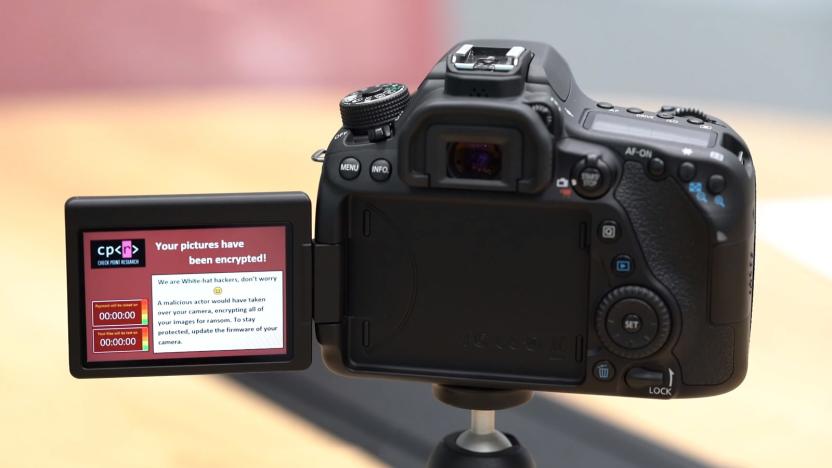
Even DSLR cameras are vulnerable to ransomware
Cameras are among the few devices that don't connect to the internet, so you'd think they'd be immune to hackers. However, researchers have discovered that some DSLRs and mirrorless cameras are actually vulnerable to ransomware attacks, of all things. Once in range of your camera's WiFi, a bad actor could easily install malware that would encrypt your valuable photos unless you paid for a key.
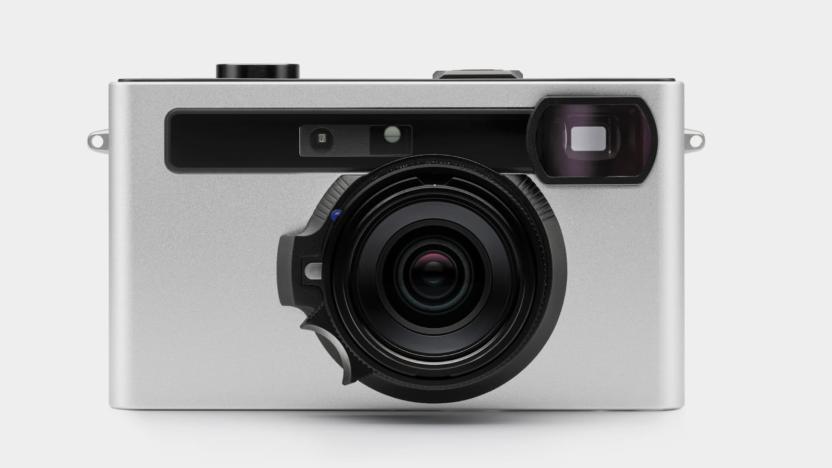
Pixii is a smartphone-centric rangefinder camera with a Leica mount
If you were thinking "I really want a rangefinder camera with a Leica M mount and no rear display or memory card," then a new French startup called Pixii has read your mind. It unveiled a digital rangefinder, also called Pixii, that it calls "a radical take on what a modern camera should be." Instead of packing a display on the back, all photos are meant to be viewed on your smartphone. And to compose the photo, there's an old-school optical rangefinder rather than an electronic viewfinder.
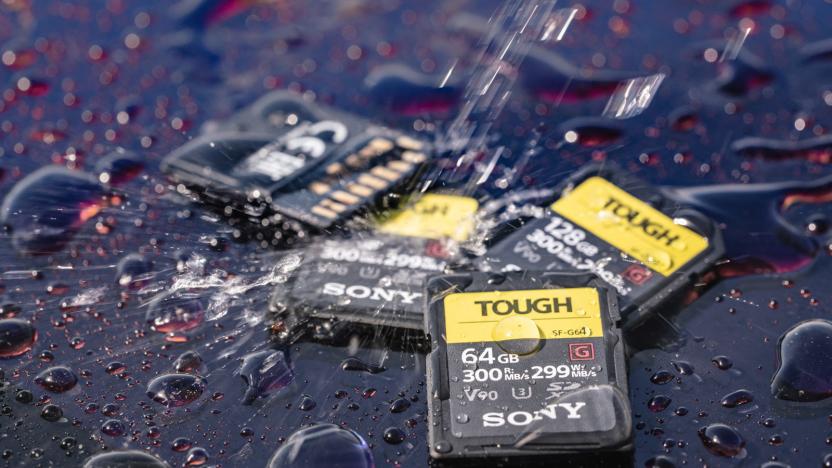
Sony's ultra-fast SD cards are designed to be abused
Not content just to have the fastest UHS-II memory cards on the market, Sony wants to have the fastest and strongest. It just unveiled the SF-G series Tough UHS-II SD cards that can handle as much pain as you care to inflict. They're 18 times stronger than standard SD cards, and "use the world's first monolithic structure with a completely sealed one-piece molding," Sony said. As such, they're bend-proof, drop-proof to five meters, waterproof and dust-proof.
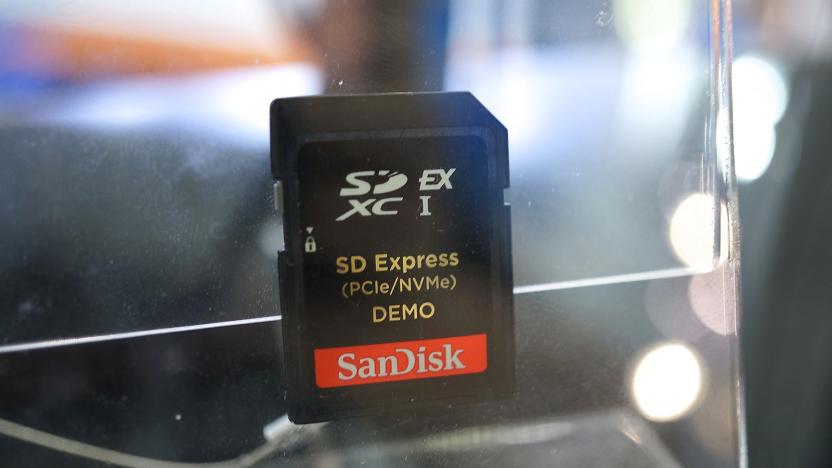
You may soon store your entire media collection on one SD card
A single SD card might someday be enough to hold your entire media collection, no matter how huge it is; and it'll obviously be even faster than today's offerings. The SD Association (the group that sets memory card standards) just announced a new specification called SD Express, which adds PCI Express and NVMe interfaces to the cards, thus ramping up data transfer speeds to as much as 985MB per second -- almost doubling that of last year's SSDs. This spec can be applied to future SDXC and SDHC memory cards, but it'll require the same additional pins as UHS-II and UHS-III specs to support the extra bandwidth.

Nintendo is delaying the Switch's 64GB game cards
To get around the Switch's current 32GB limit on game cards, Bethesda spilt Doom into two parts. The campaign is what shipped on the game card, and multiplayer was a separate download. It sounds like that might be the norm for a bit longer. The Wall Street Journal reports that Nintendo won't start supplying 64GB game cards until 2019, around six months later than the original mid-2018 target. The reason? Those pesky "technical issues" cropped up again, according to WSJ's sources, and Nintendo wants to ensure that product quality is up to snuff.
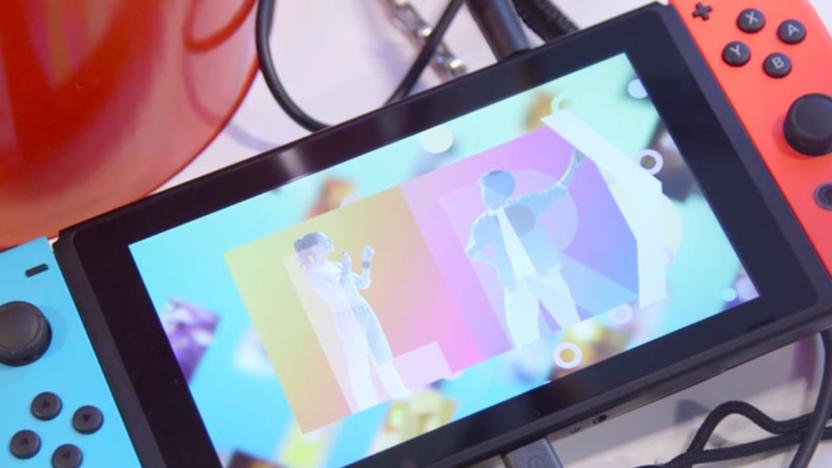
Nintendo and Western Digital bring branded SD cards to Switch
Nintendo has partnered with Western Digital on a line of officially official SanDisk microSDXC cards for its Switch console. What makes them so different? Well, Mario and Link are on the packaging and the 64-and-128 gigabyte cards have Nintendo branding printed on them. Nope, no 400GB cards featuring Wario just yet. And that's the extent of it. The cards will be available starting next month at "select retail outlets." If anything, this will make it easier for parents and family members to grab the right storage card when buying gifts come the holiday season.
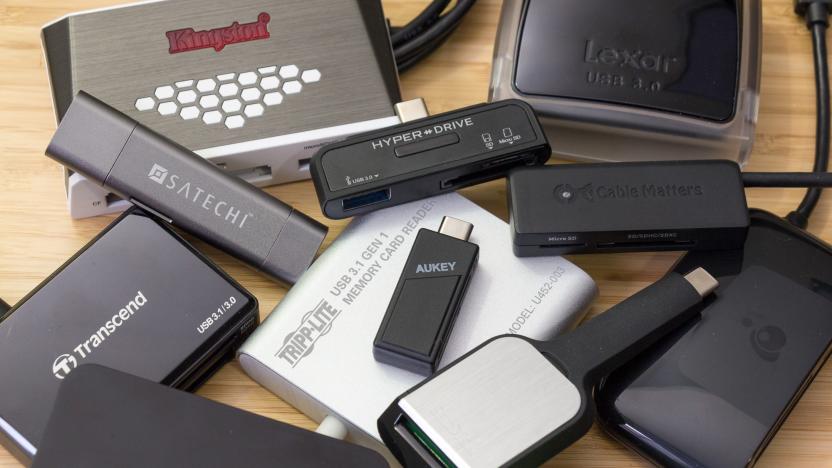
The best SD card readers
By Justin Krajeski This post was done in partnership with The Wirecutter, a buyer's guide to the best technology. When readers choose to buy The Wirecutter's independently chosen editorial picks, it may earn affiliate commissions that support its work. Read the full article here. After spending eight hours researching and testing 12 card readers, we found that the IOGear USB-C 3-Slot Card Reader is the best option for anyone who needs an SD card reader for a new laptop with USB-C ports. The IOGear delivered fast, consistent speeds, and supports SD, microSD, and CF cards.
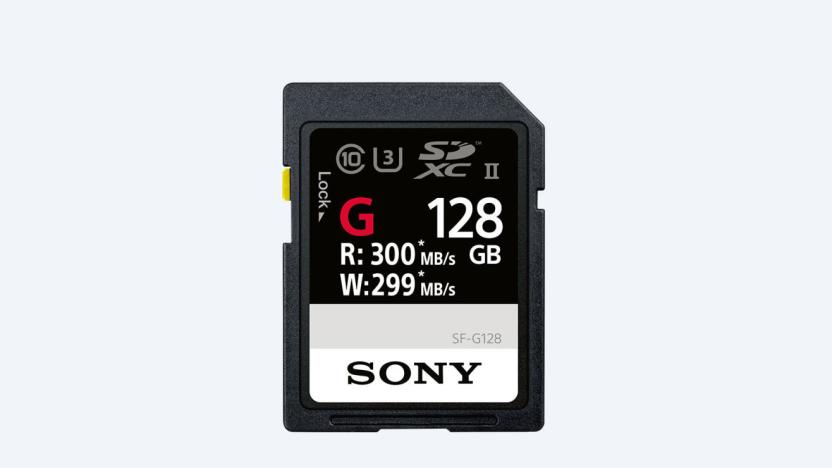
Sony's 'world's fastest' SD card writes data at 299 MB/s
Sony's upcoming SF-G series of SD cards will be available this spring, the company announced today. When that time comes, Sony said they "will be the world's fastest SD cards." Boasting a maximum write speed of 299 MB/s, that claim is right on point.

SanDisk outs the 'world's first' 1TB SD card
If you handle a lot of 4K video, you'll know that most available SD cards will struggle to handle all of your high-quality footage. The two-year old SanDisk 512GB SD card might take the edge off somewhat, but that isn't all that Western Digital, owner of the SanDisk brand, has got to offer. Today, the storage giant unveiled what it calls the "world's first" 1TB SD card. It's only a prototype, but already the company is touting the card's ability to adequately handle 4K, 8K, VR and 360-degree video when it officially becomes available.

Google Maps for Android lets you save maps to an SD card
After testing it in a limited rollout, Google has officially unveiled "WiFi only" mode for Maps on Android. When enabled, it will keep the app in offline mode, blocking it from using expensive or spotty cellular data. At the same time, messaging and other apps can still connect to mobile networks. That will help travelers cut down on roaming charges, as navigation is often the only reason you need data on a trip. It will also be a big help to folks with limited data plans.

Amazon Video for Android adds support for SD cards
Amazon just pushed a small, but important update to its Android video app: starting today, users can choose where downloaded files are stored. It sounds insignificant, but for heavy users, this is a really big deal -- until now, Amazon Video would only store content on a device's internal storage, severely limiting how much content one could keep on the device. Not anymore. Now, if you have an SD card, you have room for more movies. The feature is rolling out to customers in the US, UK, Germany, Austria and Japan. It's about time.

Apple Music now lets Android users save music to an SD card
Apple doesn't often make Android apps, but when it does, it's either to secure more iPhone users or give people access to Apple Music. Now that the streaming app has eclipsed one million downloads, the company has begun outfitting it with features that are native to Google's mobile OS. In its most recent update, Apple Music has gained the ability to download tracks to an SD card, allowing users to store more of their chosen beats offline.

Amazon's Prime Music stores tracks on an SD card
To help you conserve that limited storage space on your Android device, Amazon is letting you download Prime Music tracks to an SD card. If your go-to device has a slot for extra memory, you'll be able to store music from Amazon's streaming library for offline listening. As you might expect, you can download any purchased albums and songs there, too. In addition to the storage update, you can now control the audio and browse the app from your Android Wear device. The service also gained expanded artist pages and tabs for new and popular music to keep you up to date on what's fresh. The latest version of Prime Music for Android is rolling out now, so if you're not seeing the new features, they should arrive shortly.

Your Chromebook now sends photos to Google+ in the background
To date, Chrome OS has only backed up photos to the cloud as long as you left the Google+ Photos app open; that's a hassle on the frequently limited screen real estate of a Chromebook. You won't have that headache if you grab the updated Photos app, however. The new version automatically uploads snapshots from your SD card in the background, even if the app is closed; you can move on to email knowing that all those vacation pictures will be safe. It's a simple addition, but it should make a big difference if you're planning to go on photo safaris this summer.

Eyefi's new service sends your camera's photos to the cloud as soon as you shoot
There are plenty of cameras that send their photos to your phone, but you frequently have to transfer those pictures yourself -- and it's another hassle to get the pics to other devices. Eyefi thinks it can solve these headaches by launching its own online service, Eyefi Cloud. If you're using one of the company's WiFi-equipped Mobi cards in your camera alongside new Android and iOS apps, any photos go both to your mobile device and Cloud right after you've hit the shutter button. You only need a browser to manage your shots, so you're not stuck if you want to see your photos on a new PC.

New SD card format is speedy enough for 4K video
Outside of a few smartphones, 4K video capture has largely been limited to pro-level hardware; the SD cards in regular cameras frequently can't handle so many pixels at once. That won't be a problem in the near future, as the SD Association has just unveiled an Ultra High Speed Class 3 (U3) card format that's up to the job. The spec guarantees write performance of at least 30 MB/s, or enough bandwidth to record 4K clips without hiccups. You'll have to wait for U3-capable devices and cards to begin shooting, but it shouldn't be long before you can produce footage worthy of your Ultra HD TV.

Huawei's UltraStick is a 3G SD card with no storage, has slot for a nano-SIM
To start, it's not another Eye-Fi card competitor. Nope, this wireless-capable SD card spotted at CEATEC has no memory of its own. Instead, Huawei's scooped out the gigabytes and replaced them with a 3G radio, capable of up to 21Mbps (HSPA+) download speeds. It's easier to think of it as a super-petite MiFi dongle, but one that could be ideal for any slender laptop owners who are looking to free up a USB port. Huawei's apparently still hunting down carrier partners to work with, but if we hear anything about a price or where we might eventually find it, we'll let you know.

Toshiba's Exceria Pro SDHC cards claim 'world's fastest' write speeds of 240MB per second
SD cards are a dime a dozen, so any new entrants need a pretty juicy hook to get our ears pricked. Toshiba's Exceria Pro cards mightn't have any wireless or special transfer features, but they do claim to take the "world's fastest" title for one basic spec: write speeds. Intended for top-level cameras, the Pro SDHC cards will come in 16GB and 32GB configurations and tout the UHS-II high-speed standard for achieving write speeds of 240MB per second. Launching alongside the Pro options will be a couple of Exceria SDXC cards with capacities of 32GB or 64GB. Also UHS-II compliant, these have maximum write speeds of 120MB per second; data read speeds of all Exceria cards top out at 260MB per second. They'll be available in "major markets worldwide," but will arrive in Japan first, with the Pro cards launching in October before the regular Exceria models in November. Pricing info isn't available right now, but we imagine they'll be a little more expensive than the standard cards tucked away in your point-and-shoot.

Eye-Fi's Mobi SD card sends images straight to a phone or tablet
When Eye-Fi first launched its wireless SD cards back in 2006, most of us weren't carrying smartphones, much less tablets. At the time, the idea was to send your photos straight from your camera to your PC, where you could run slideshows or upload them to the cloud (if you were already into that sort of thing). Lately, though, Eye-Fi has been forced to rethink its product: the company just announced the Mobi, a $50 Class 10 card that sends images directly to your mobile device, bypassing the computer altogether. Designed for people already used to storing pics on phones and tablets, it works with a free iOS / Android app that acts as an image viewer. To set it up, you enter a 10-digit activation code included in the packaging, which you can use with as many gadgets as you like. After that, the card will continuously send photos and video to your device. And because the Mobi is a hotspot unto itself, your gear doesn't all need to be on the same network, or even in range of a router. The Mobi is available today, priced at $50 for 8GB and $80 for 16GB. For those of you who expect to do some heavy-duty editing, you can still buy Eye-Fi's existing X2 cards, which send images to PCs, and can handle both RAW and JPEG. Additionally, those pro-level cards can be configured to send different file formats to different locations. If that seems like overkill, though, the Mobi might be the better option -- it's not like you can't eventually get those photos off your phone, right?

Toshiba to show reference design for SDHC card with TransferJet at CES
SD cards won't be generating the same feverish hype as other gear breaking cover at CES, but nevertheless, Toshiba's let the world know it'll be bringing a new one to the show. The company won't have a finished product to flog, but instead will be exhibiting a reference design for an SDHC card with TransferJet technology. For those unfamiliar with TransferJet, it's a high-speed wireless transfer technology for sending and receiving files over short distances. While it isn't used nearly as much as its transfer protocol peers, hopefully it'll find some work to do if and when Toshiba takes its card from design to product.










